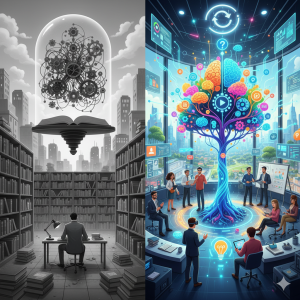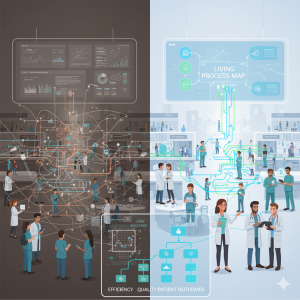
We give too much credit to discipline and not enough to design.
Why Self-Discipline Works Better When You Design for It
After working with countless leaders, I’ve learned something surprising.
Most people aren’t failing because they lack discipline, they’re failing because their environment works against them.
Willpower is praised as the engine of success, but it’s not infinite. It runs out. Fatigue sets in. Focus fades. Even the most driven people eventually lose steam.
If you’ve ever started strong but struggled to sustain momentum, the problem isn’t you. It’s your system, or rather, the lack of one.
The Real Problem: Willpower Is Unreliable
Relying on willpower is like expecting your phone battery to last all day without a charger. It might hold up for a while, but eventually, it drains.
That’s why so many professionals sprint toward goals, only to burn out halfway. Willpower fluctuates. Systems don’t.
The Smarter Move: Design Systems That Do the Heavy Lifting
When you design your environment to make the right actions easy, success stops being about motivation and starts being about momentum.
You remove friction. You reduce decisions. You make progress automatic.
Here’s how.
1. Automate Decisions Before They Drain You
Every choice you make costs energy. That’s why Steve Jobs wore the same outfit daily, one less decision to think about.
Pre-schedule your day, batch similar tasks, or use automation tools. The fewer trivial decisions you face, the more focus you’ll have for what matters.
2. Build Triggers That Spark Good Habits
Habits thrive on cues.
Want to read more? Leave a book where you’ll see it first thing in the morning.
Want to exercise? Lay out your gym clothes the night before.
When your environment nudges you forward, habits form naturally.
3. Design Your Environment to Work for You
Environment shapes behaviour more than willpower ever could.
If you want to focus, make distractions hard to reach.
If you want to eat better, keep healthy food visible and the junk out of sight.
A good system doesn’t fight your weaknesses, it designs around them.
4. Create Accountability Loops
Goals fade in silence but grow stronger when shared.
Tell someone what you’re working on. Use a coach, a peer group, or even a tracking app.
Accountability isn’t pressure, it’s structure that keeps your intentions alive.
5. Measure the Process, Not Just the Results
The best performers don’t just measure outcomes, they track the actions that create them.
If your goal is to grow your business, track daily outreach, not just revenue.
If you want better fitness, measure workouts, not weight loss.
Focus on the behaviours that drive progress, not the scoreboard.
6. Remove Friction, Build Momentum
When something feels too big to start, shrink it.
Can’t write a full report? Write 100 words.
Can’t find time for the gym? Do 10 minutes.
Momentum builds faster than motivation. Start small, stay consistent.
Final Thought: Design Wins Over Discipline
The most successful people don’t depend on willpower to get things done.
They create systems that make the right thing the easy thing.
What’s one system you could design today that would make success easier tomorrow?
You don’t need more willpower, you need a better design.









